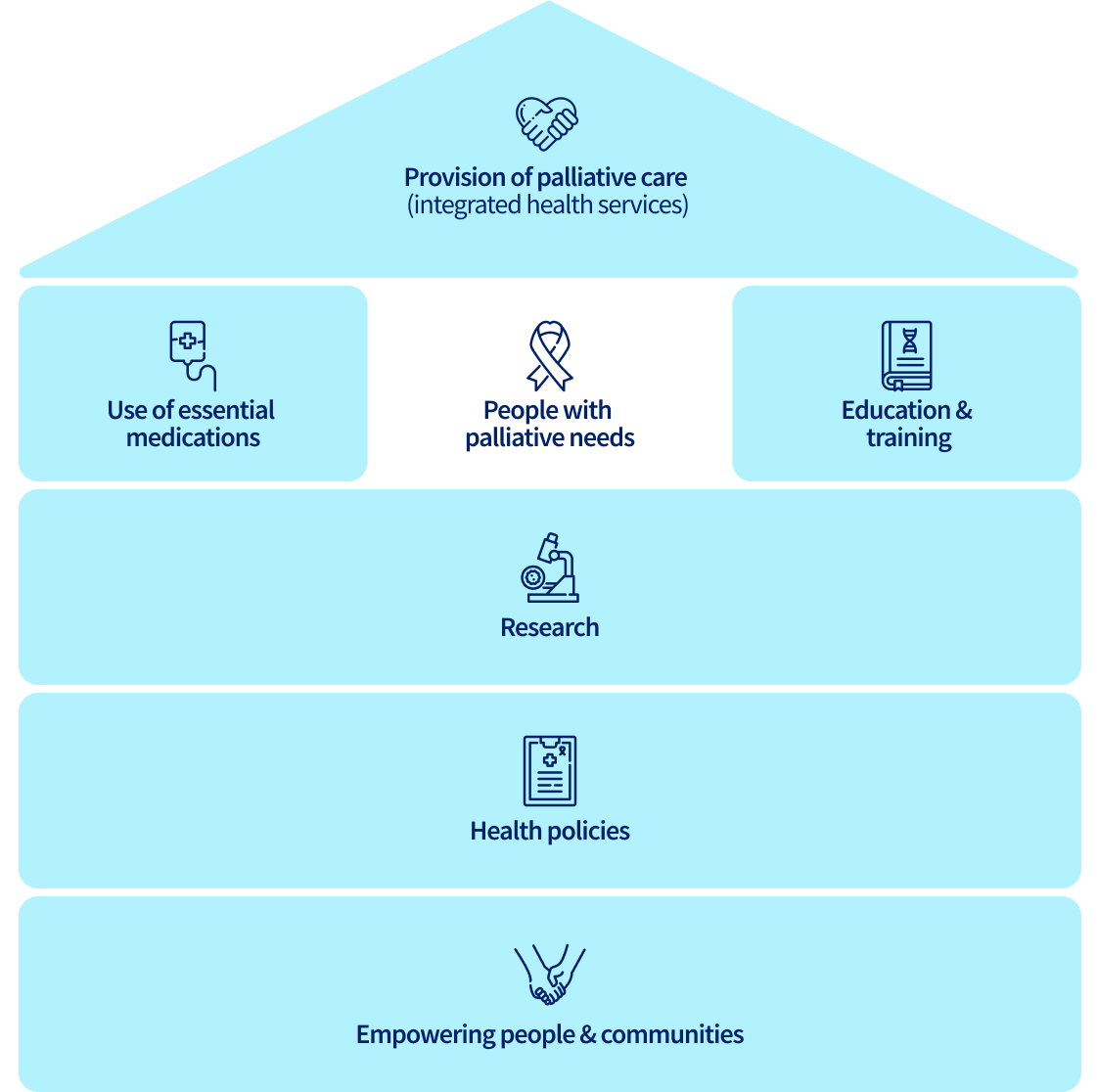Pain Control
Only 0.2% of Nigerians in need of opioid morphine receive it, compared to a distribution in the United States that exceeds the need by 30 times.
About 30% of individuals facing serious health-related suffering are affected by cancer (Figure 38.1). Cancer pain remains a common and distressing symptom both during treatment and in survivorship, affecting approximately half of all cancer patients and two-thirds of those with advanced disease.
Distribution of diseases contributing to serious illness for palliative care worldwide, and in low- and middle-income countries, 2015
While affordable interventions exist in most high-income countries, palliative care and pain relief are often neglected in low- and middle-income countries (LMICs), especially for the populations in need such as patients with terminal cancers. Access to opioids, the primary treatment for cancer-related pain, remains critically insufficient in LMICs (Figure 38.2).
Global distribution of opioid morphine equivalent and estimated percentage of need met, 2018

“Leaving people in pain when effective medicines are available for pain management, especially in the context of end-of-life care, should be a cause of serious concern for policymakers.”
Much more needs to be done to develop and deliver palliative care in LMICs where nearly 80% of the need for palliative care exists. The World Health Organization (WHO) estimated that by 2037, nearly one-third of the global need for palliative care will be in Africa, driven by the increasing burden of cancer and human immunodeficiency virus in the region. With about 70% of operating palliative care services in high-income countries, a major effort to develop palliative care in LMICs is urgently needed (Figure 38.3).
Resources are needed to strengthen palliative care, especially in low- and middle-income countries, where access is limited and the burden continues to rise.
Availability of palliative care services for non-communicable disease patients, by World Bank income group, 2019
Key steps to improve cancer pain management in LMICs include: 1) appropriate training of health care professionals on pain management; 2) improved access to pain medicines; and 3) the provision of palliative care services (Figure 38.4). An affordable essential package of palliative care and pain relief interventions can substantially reduce suffering from cancer and other serious diseases. Public financing and integrating this package into national health systems as part of universal health coverage can offer a practical solution (see Universal Health Care).
Priority action areas can strengthen the global delivery of and access to palliative care

Advocacy and education at the governmental and societal levels are also vital. Finally, it is key to provide cancer pain education to health care providers and community health workers at the provincial and district hospital level to ensure that this is accessible to all.

The American Cancer Society Treat The Pain initiative partners with governments in LMICs to educate health care providers and caregivers, addressing knowledge gaps and promoting better advocacy for improved access to pain medicines. Over 26,000 health care workers have received training across 75 health facilities in Eswatini, Ethiopia, Kenya, Nigeria, Rwanda, and Uganda, reducing pain scores for patients enduring moderate and severe pain. The implementation of the program across 48 hospitals in Rwanda led to an improvement in the average pain score, from 7/10 (severe pain) in 2018 to 3/10 (mild pain) by 2024.